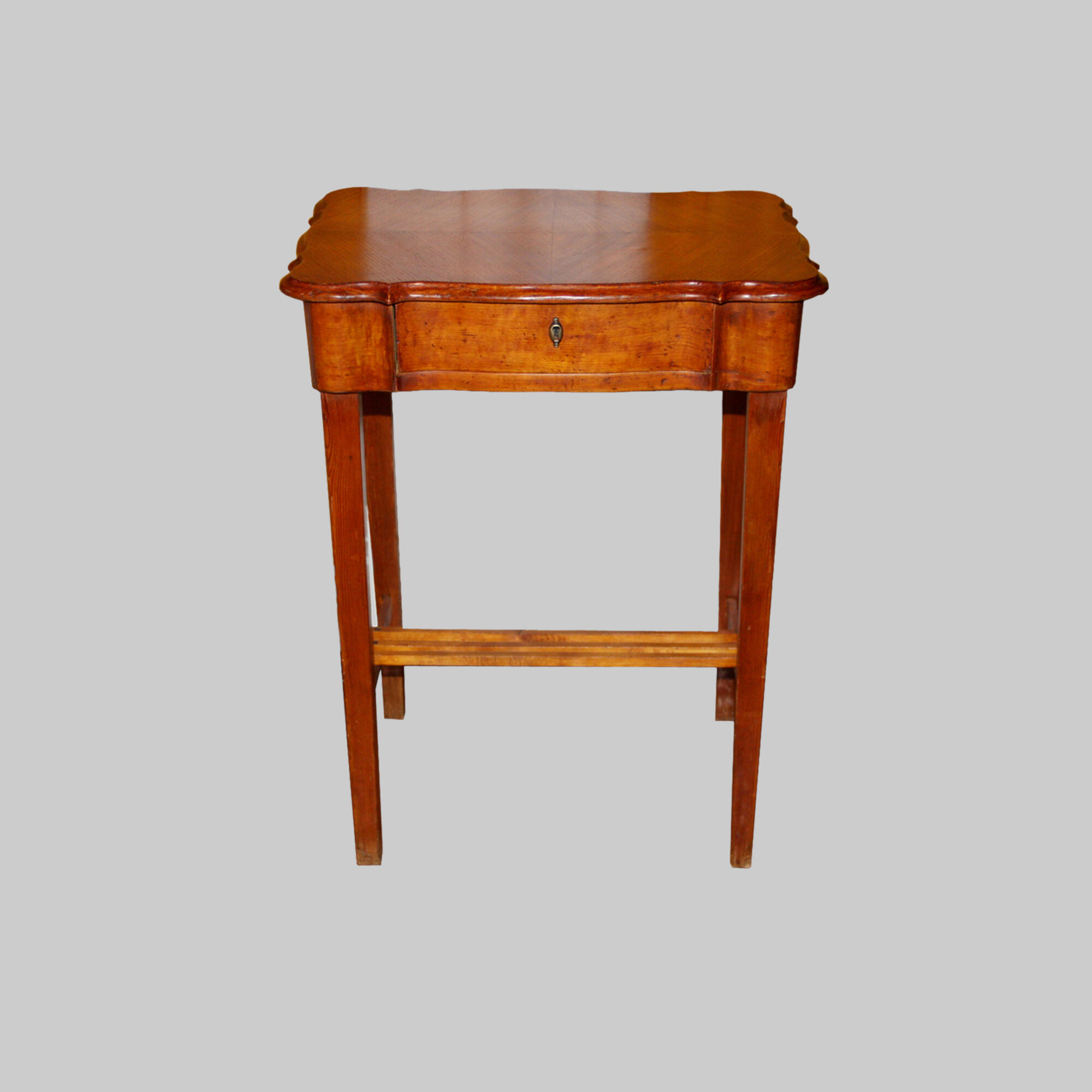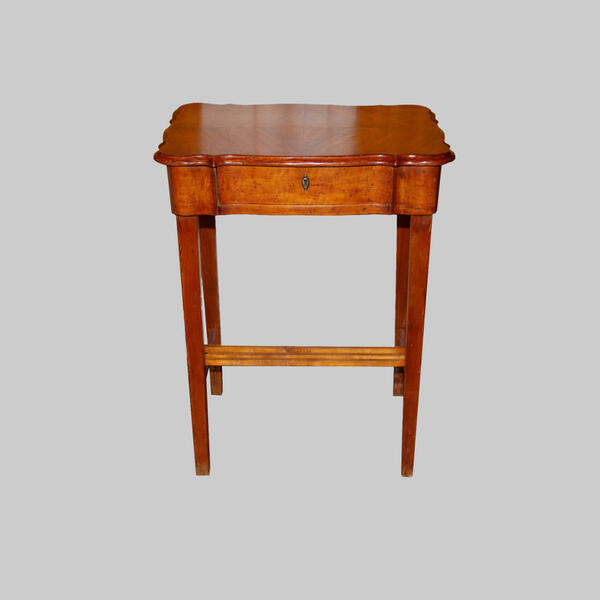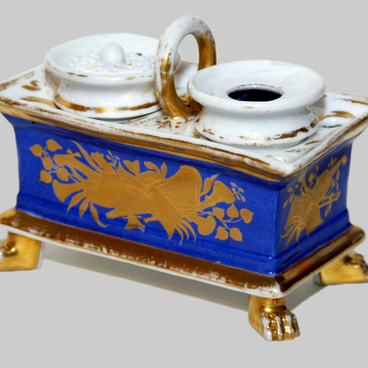Over the 18-19th centuries needlework was at it’s peak. A lady’s skill in needlework was considered one of her greatest virtues. Noble ladies and simple peasant girls learned to make things and embroider by hand, things that were often striking in their subtlety and beauty. Even queens and nobles saw no shame in the activity, which is part of the reason artists of the time so often depicted them with needlework before them, which was considered good form for any class or station. Girls were taught the art of embroidery from a very young age. Using beads became a very popular method at the time.
The needlework table acted as a work of art in a way, while retaining it’s functionality as a necessary piece of home furniture. It could simultaneously serve as a music stand, writing, drawing, and reading table, as well as the place for the jewelry box. The tables folded easily using a fairly simple mechanism. They contained hidden drawers, sometimes even several. A series of drawers for storing tools and other nick-nacks had them on different levels, layered over one another. Tables often folded using secret mechanisms, accompanied by a number of hidden compartments, in effect a dresser filled with secrets. When folded, the table would at times decorate the bedroom or guest room in a way that you might never guess it’s real initial use.
The late 19th century table presented in the Decembrists in Yalutorovsk exhibit was kept in Irina Frolova’s family, and belonged to her great-grandmother Tizengauzen Elena Orestovna (1885-1969), the great-niece of the Decembrist Vasily Karlovich Tizengauzen. The table was made of solid wood, covered with veneer, namely thin wood cuts and a glossy varnish. The table top was designed rectangularly with curling edges. A small drawer for small things was mounted in the underframe. Its space was divided by partitions into nine cells, one of them with a reclining pillow-pincushion made of burgundy fabric with satin stitch embroidery. The tabletop rested on graceful legs, tapering slightly downward, with three thin transverse slats.
The needlework table acted as a work of art in a way, while retaining it’s functionality as a necessary piece of home furniture. It could simultaneously serve as a music stand, writing, drawing, and reading table, as well as the place for the jewelry box. The tables folded easily using a fairly simple mechanism. They contained hidden drawers, sometimes even several. A series of drawers for storing tools and other nick-nacks had them on different levels, layered over one another. Tables often folded using secret mechanisms, accompanied by a number of hidden compartments, in effect a dresser filled with secrets. When folded, the table would at times decorate the bedroom or guest room in a way that you might never guess it’s real initial use.
The late 19th century table presented in the Decembrists in Yalutorovsk exhibit was kept in Irina Frolova’s family, and belonged to her great-grandmother Tizengauzen Elena Orestovna (1885-1969), the great-niece of the Decembrist Vasily Karlovich Tizengauzen. The table was made of solid wood, covered with veneer, namely thin wood cuts and a glossy varnish. The table top was designed rectangularly with curling edges. A small drawer for small things was mounted in the underframe. Its space was divided by partitions into nine cells, one of them with a reclining pillow-pincushion made of burgundy fabric with satin stitch embroidery. The tabletop rested on graceful legs, tapering slightly downward, with three thin transverse slats.



